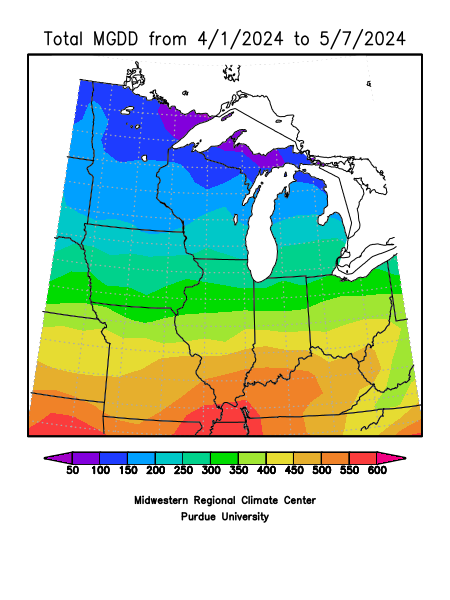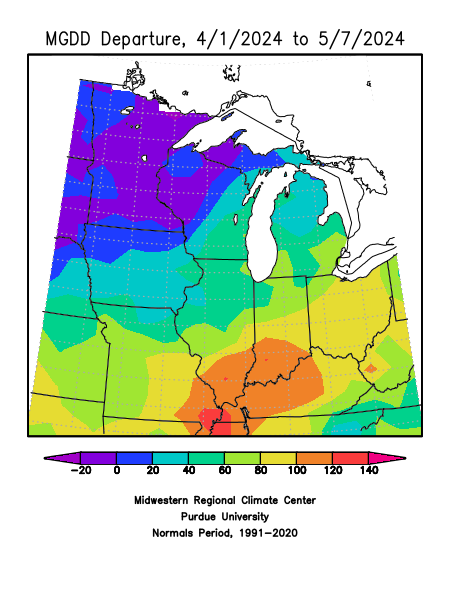Modified Growing Degree Days
Modified Growing Degree Days (MGDD) are an adaptation of the traditional Growing Degree Days (GDDs) used to more accurately track the development of crops, such as corn. In MGDDs, daily high and low temperatures are adjusted before calculating the average: if the daily high exceeds 86°F, it is capped at 86°F, and if the daily low is below 50°F, it is raised to 50°F. These adjustments reflect the temperatures most favorable for crop growth, assuming that development slows significantly outside of this range.
After these modifications, the average temperature for the day is calculated and compared with a base temperature (usually 50°F). For example, if the actual high for the day is 92°F and the low is 68°F, the modified temperatures would be capped at 86°F and raised to 68°F, respectively, resulting in an average of (86 + 68) / 2 = 77°F. This process helps farmers and agronomists monitor crop development stages, anticipate harvest times, and optimize management practices by providing a more precise measurement that accounts for temperature extremes that do not contribute to plant growth.
Click maps for full image. Accumulation and departure maps beginning April 1 and May 1 are represented below.



